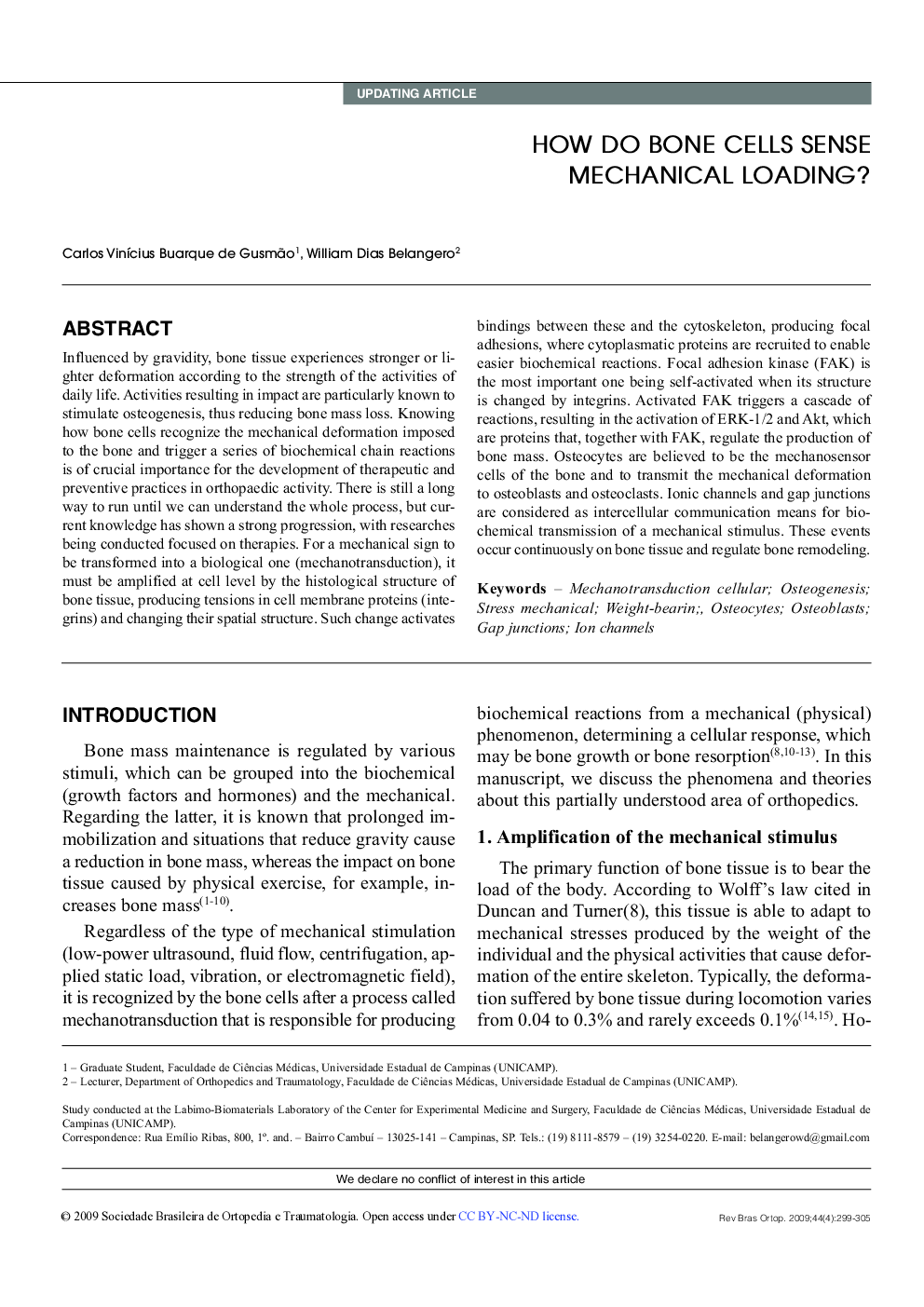| Article ID | Journal | Published Year | Pages | File Type |
|---|---|---|---|---|
| 2718512 | Revista Brasileira de Ortopedia (English Edition) | 2009 | 7 Pages |
ABSTRACTInfluenced by gravidity, bone tissue experiences stronger or lighter deformation according to the strength of the activities of daily life. Activities resulting in impact are particularly known to stimulate osteogenesis, thus reducing bone mass loss. Knowing how bone cells recognize the mechanical deformation imposed to the bone and trigger a series of biochemical chain reactions is of crucial importance for the development of therapeutic and preventive practices in orthopaedic activity. There is still a long way to run until we can understand the whole process, but current knowledge has shown a strong progression, with researches being conducted focused on therapies. For a mechanical sign to be transformed into a biological one (mechanotransduction), it must be amplified at cell level by the histological structure of bone tissue, producing tensions in cell membrane proteins (integrins) and changing their spatial structure. Such change activates bindings between these and the cytoskeleton, producing focal adhesions, where cytoplasmatic proteins are recruited to enable easier biochemical reactions. Focal adhesion kinase (FAK) is the most important one being self-activated when its structure is changed by integrins. Activated FAK triggers a cascade of reactions, resulting in the activation of ERK-1/2 and Akt, which are proteins that, together with FAK, regulate the production of bone mass. Osteocytes are believed to be the mechanosensor cells of the bone and to transmit the mechanical deformation to osteoblasts and osteoclasts. Ionic channels and gap junctions are considered as intercellular communication means for biochemical transmission of a mechanical stimulus. These events occur continuously on bone tissue and regulate bone remodeling.
